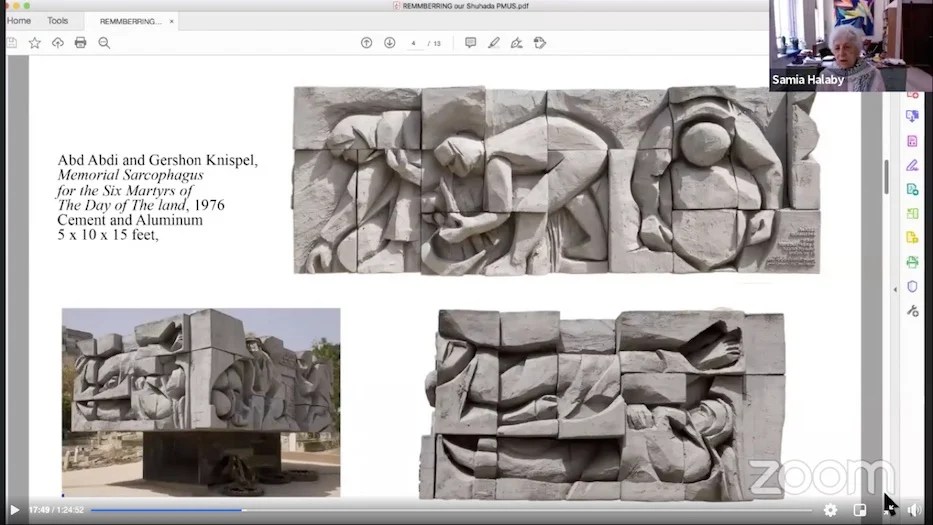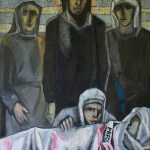
Lucy Gellman | May 17th, 2021 Art Council of Greater New Haven
Excerpt from Article covering Palestine Cultural Week at the Palestine Museum USA:
Abed Abdi and Gershon Knispel’s Memorial Sarcophagus for the Six Martyrs To The Day of The Land rises from the ground in aluminum and grey cement, heavy from the moment a viewer puts their eyes on it. On one side, two bodies lie one atop the other, chiseled and molded to look larger than life. On another, a body leans forward, reaching towards the land. It feels like a puzzle cube, where every side is a potential step towards death.
The monument, completed by a Palestinian and an Israeli, is from the late 1970s. It feels as though it could have been sculpted last week.

Halaby pointed to other artists who continued Ghassan Kanafani’s legacy, some using public art as a form of resistance. Among them, she said, was artist and avowed Communist Party member Abed Abdi, who worked with the Israeli artist Gershon Knispel on the sculpture Six Martyrs To The Day of The Land. Later in her presentation she returned to Abdi’s painting, to speak about his lifelong dedication to liberation work.
The monument pays tribute to the six Palestinians killed by Israeli police in March 1976, during a Palestinian general strike now known as Land Day. Held in the town of Sakhnin, the strike opposed the Israeli seizure and occupation of thousands of acres of land. Israeli police ultimately opened fire on unarmed Palestinian strikers, killing six people. Saturday, Halaby called the work “one of the most amazing sculptural monuments of the twentieth century.”
As she pulled it up, the timelessness of the piece extended beyond the screen, spilling out across computers across the country and the globe. When Abdi and Knispel completed the work in 1978, they proposed placing it in the middle of Sakhnin, where the hulking work would be a physical intervention on the landscape. Because “this was not allowed by Israel,” according to Halaby, the piece now stands in the town’s graveyard.



















